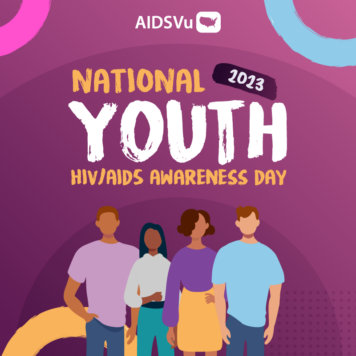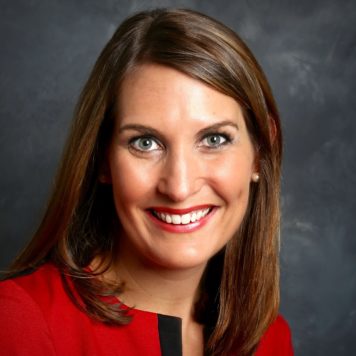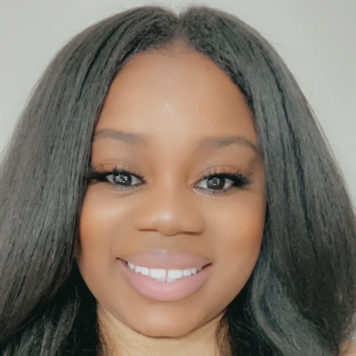Dr. Samantha Hill, MD, MPH, is a Medical Director at UAB Family Clinic, where she focuses on HIV prevention and treatment in young people and adolescents.
Your clinical research includes advocating for the health and wellbeing of adolescents and young adults with a focus on HIV treatment and pre-exposure prophylaxis (PrEP). What drew you to this line of research?
Growing up in the Atlanta area in the late eighties and early nineties, I encountered HIV and what the epidemic looked like there compared to other parts of the country. Seeing faces that looked like mine –of varying ages and genders—piqued my interest. I’ve also usually worked with someone who either had HIV themselves, grew up with a parent or guardian that had it, or have been on the receiving end of some misperceived stereotypes around HIV.
All those things drew me to the field and to being in a position where I can work with younger populations to improve sexual health knowledge about HIV and other sexually transmitted infections (STIs). For that reason, I chose to go into pediatrics with adolescent medicine as my subspecialty field, because I really wanted to get that increased knowledge about younger populations and to be adaptable and relatable to them. When I started my fellowship working in HIV clinics, I realized that nobody was looking at this age group. Nobody was looking at the differences between what HIV looks like in the South versus other regions, or in rural versus urban settings. That is what inspired my shift towards research in this field with this age group.
In 2021, there were 6,133 young people (aged 13-24) newly diagnosed with HIV, which is 19% of all new HIV diagnoses in the United States. How can we promote HIV education and awareness among this population? Are there strategies you believe we should be engaging in towards youth that don’t get the funding or attention they deserve?
We must improve HIV education among individuals that have contact with our youth, including the youth themselves. We need to figure out different strategies to make parents, providers, and different people in the community feel more confident and empowered to have informed and accurate discussions with our youth. This lends itself into revamping HIV education within the school system to cultivate sex positive discussions with youth populations. Health care providers, teachers, family members, et cetera should feel comfortable advising youth about how to engage in a safe and healthy sex life and should be familiar with resources that can aide them in having these conversations.
Additionally, health care providers need to adapt their skills and tools to fit the person in front of them. For instance, a question about whether you are sexually active may not resonate with a 13-year-old. We should have developmentally and culturally relevant tools to communicate with the people in front of us. Without the ability to adapt, we potentially miss out on opportunities to increase our youth’s knowledge and capacity about health, healthy relationships, and wellness.
Influencers in social media and entertainment will also play a role in engaging and informing youth about HIV education, promoting healthier behaviors and reducing sex, sexuality, and HIV-related stigma. We’ve seen influencers in movies or music that educated about voting rights or drug use in the past. Moving forward, we should use our social media, entertainment, and performing arts communities to promote HIV education and awareness to populations that may not resonate with current promotional items.
As far as funding opportunities, we need additional opportunities for peer-led initiatives. Even though it takes more time to complete, a lot of this work needs to come from communities. While we can take large concepts and adapt into the communities, we really need community led and peer-led initiatives if we want to make an impact. By peer-led, I mean there would be young people working with other young people in environments to either improve education around these topics or leading them into clinical settings, so they can get PrEP and STI testing.
Your paper, “’Let’s take that [stop sign] down.’ Provider perspectives on barriers to and opportunities for PrEP prescription to African American girls and young women in Alabama” examined how PrEP is underutilized by young women—especially young Black women—in the South. What barriers contribute to low PrEP use among young people, and how can we address these barriers to increase PrEP use?
The barriers we are used to hearing about are stigma around sex and sexuality as well as gender-related norms in addition to HIV. However, we also must remind ourselves that we really do not have the greatest health literacy when it comes to STIs, HIV, and sex. Due to this, youth in general may not realize that they are engaging in sex that could potentially expose them to an STI.
In addition, the risk for young women—particularly young Black women—is really that very few people, including their own providers, perceive them to be at risk. Often, young women are not getting the testing that they would need, because they do not perceive themselves to be at risk, even though studies show that they are. We use risk-based language when we speak with them and these types of discussions result in them tuning us out. Another part of the challenge is that we do not understand adolescent relationships, specifically serial monogamy and sexual concurrency, which is when you move from relationship to relationship without an in-between period. Although both of these types of relationships are normal for adolescents and young adults, our youth may not always recognize how their health can be impacted by the health of their partners. Moving forward, we need more sex-positive framing (and less risk-based discussions) by the people interacting with our young women. They can enlighten youth about how regular STI testing, PrEP, and other things can be beneficial for them to ensure a safe sex life.
Lastly, there needs to be more youth representation in commercials advertising HIV prevention. Most of the commercials advertise to same gender-loving populations, transgender populations, or people in their mid-twenties and up, and less to people in their teenage years. As someone who does HIV treatment for a living, I see plenty of teenagers, high school students, and college students that have HIV. More inclusive advertising can create opportunities for discussion about sexual health.
In 2020, 80% of youth (aged 13-24) were linked to HIV care in the United States, which is the lowest of any age group. What are some unique challenges young people face when trying to access care and stay engaged in care? What strategies can be implemented to improve linkage to care among youth?
The challenge even before accessing care is getting tested. Not enough young people are getting tested for them to know their status or get engaged in care. Another challenge is our healthcare structure in general. It is challenging for most adults to enter and stay engaged in healthcare for any medical condition. Expecting a teen or young adult to be able to overcome these challenges on their own, especially in the setting of having a medical condition that may still be heavily stigmatized, is unrealistic. Challenges like understanding insurance, transportation, accessing mental health services to help process new diagnoses, housing, substance use programs, and money management are all resources youth may need to stay actively engaged into care. We have to find ways to reach this group where they are.
As far as other things that should be implemented, again, we really do need more peer-led programs and co-located services. We need more young people working and guiding us in our care settings, as well as settings that not only do the HIV testing and treatment, but also do STI testing, contraceptive care, mental health care, substance use care, and primary care. In the same vein, we need more “status-neutral” clinics. If you happen to test positive for HIV, status neutral clinics can have HIV management services on location.
From my perspective as a pediatrician and adolescent specialist, we also really need non-traditional clinic hours, because some young people are unable to make it during traditional clinic hours due to odd working hours. We really need to think about our clinic model and improve it for young people. We just need to be more creative and innovative to make sure that our clinical services are able to be accessed by youth who may need non-traditional settings.
April 10 is National Youth HIV/AIDS Awareness Day, a day to raise awareness about HIV’s impact on adolescents and young people. What message do you have for the community on this day?
My biggest message is know your status. If you are a young person, go get tested. Grab your friends and go get tested together. You can look at your results independently, but go get tested. If you happen to be a provider that works with youth, or someone in the health care system that works with youth, encourage your youth to go get tested. Make sure you ask explicitly if they’ve been tested for HIV, as many youth assume if you test them for one STI, you’ve tested them for everything, and offer to refer them for testing if needed.
If you are a parent of a young person, I would say sit down and start to have the conversation with them about sex. It is going to be awkward, but it is going to be okay. What I’ve found is that youth will accept our awkwardness as adults if we are open and honest and are okay with being a little bit vulnerable about what we don’t know. If there is a question they ask and you don’t know the answer, offer to look it up with them. If there’s something they say that you’re not aware of, as them if they can explain it to you. These small actions really show that you are invested in their health with them. They can encourage them to know their status as well. So, the biggest thing is to get tested, not just for HIV, but for all the different things that you should get tested for.




